The Sacred Valley of the Incas, located in the Peruvian Andes at an average altitude of 2,800 meters and crossed by the Urubamba River, is home to numerous archaeological sites, cities and towns dating back to the Inca era that extend to the foot of Machu Picchu .
One of those places is Moray, which is located about 32 kilometers northwest of Cuzco and 7 from the Maras salt flats, and reaches 3,500 meters of altitude.
It is made up of three amphitheatres or zones, one main and two secondary, consisting of 10 to 12 terraces arranged in concentric circles along the contour lines of the land, built between the 14th and 15th centuries.
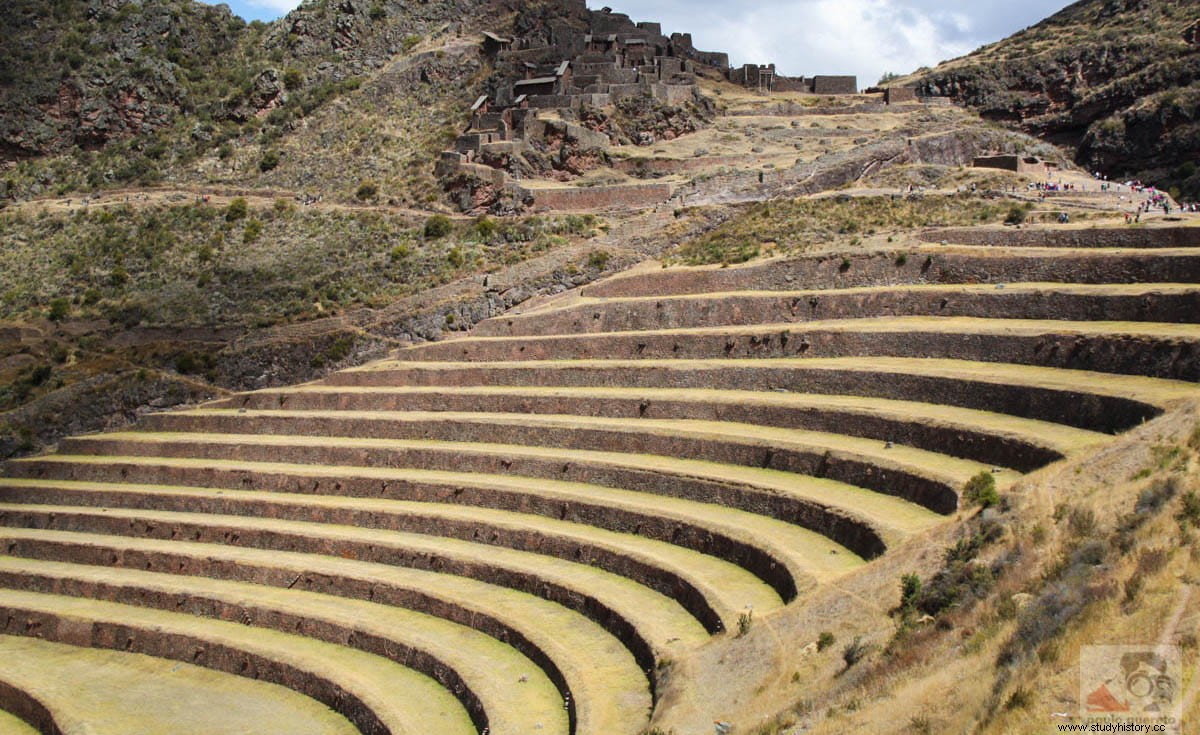
The position of these terraces, which reach a depth of 150 meters, and the thickness of the walls that store heat during the day and diffuse it at night, create a series of microclimates in them, with the highest temperature in the center , which decreases towards the outside and upwards depending on the distance from each terrace. A difference of between 3 and 5 degrees of average temperature has been registered between adjacent sectors. Altogether up to twenty different microclimates can be traced in them.
Each of the terraces and levels, which are about 2 meters high, is accessible by a system of stairs whose steps are directly embedded in the walls. It is estimated that each level represents approximately one thousand meters of altitude under normal growing conditions.
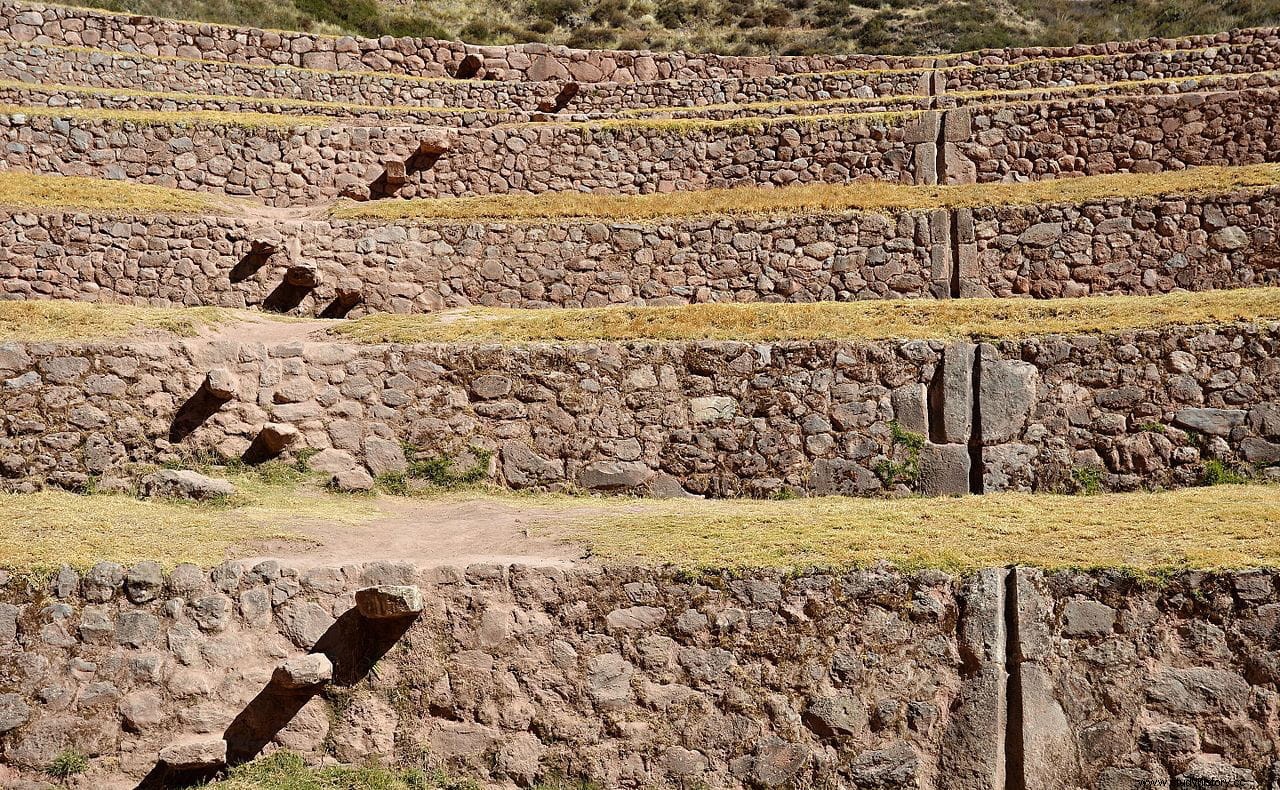
The terraces are formed by retaining walls and a complex system of irrigation canals, with fertile soils that allow the cultivation of more than 250 species of plants. A large basin or pond at the top of the site stored water, which was then carried to each level by stone-carved irrigation canals.
The large amount of earth that was necessary to remove to create them has led some scholars to think that the Incas took advantage of large pre-existing holes, perhaps the result of the impact of a meteorite.
What all researchers agree on is that Moray was an agricultural research center of the Inca empire, where crop experiments were carried out and even yields were predicted both in the Sacred Valley and in other parts of the empire.
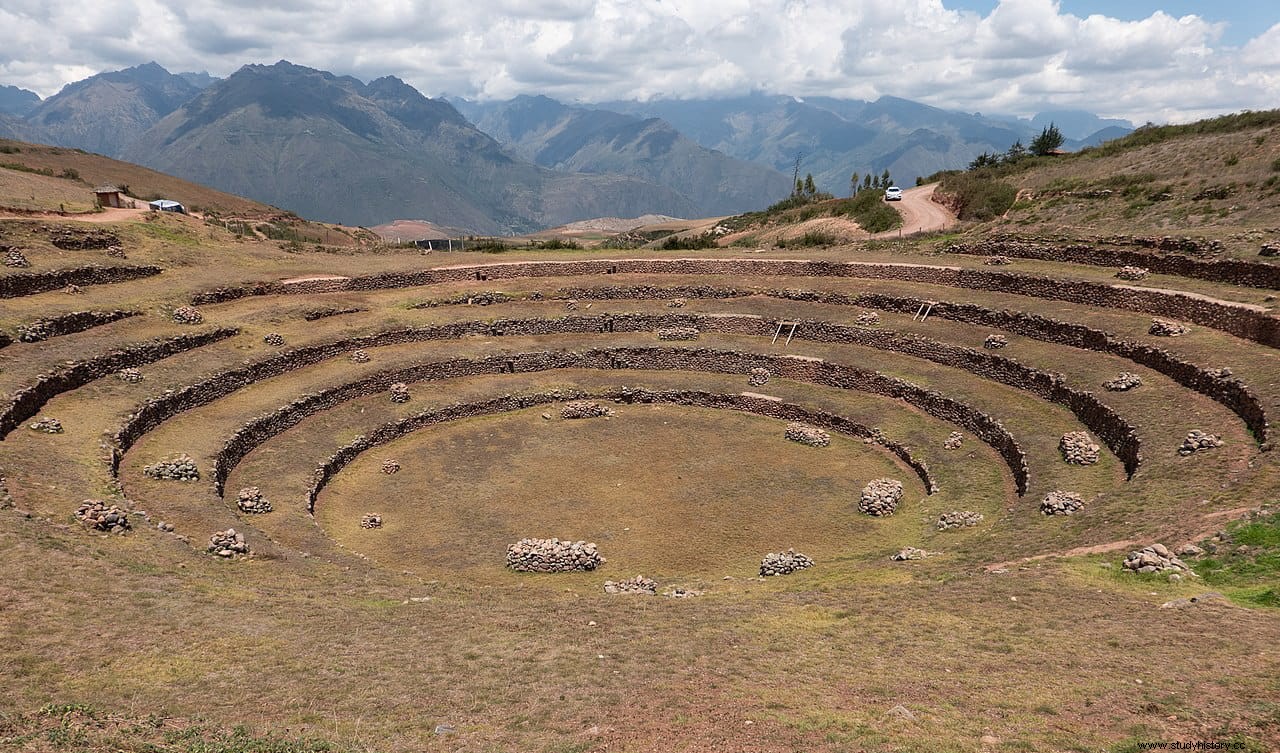
It is also thought that the Incas used the concentric terraces to try to acclimatize exotic plants to local conditions. Archaeologists have found seeds of different species, most of them fossilized but some still viable.
The place was abandoned after the arrival of the Spanish, becoming progressively covered and hidden by vegetation, until it was rediscovered in 1931 by the expedition led by Robert Shippee and George Johnson that flew over the area.
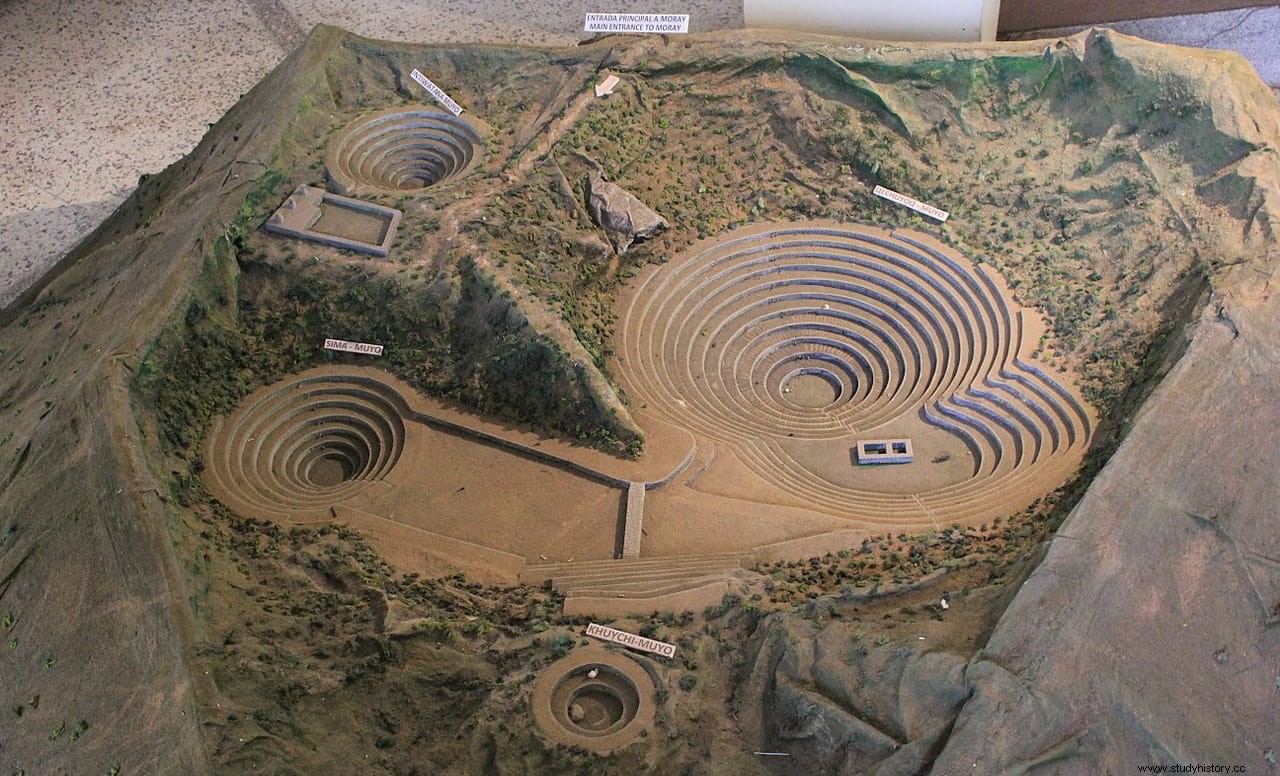
Since then numerous explorers and researchers have analyzed the place, offering different hypotheses about its origin and purpose. Victor Angles believes that at some point the inhabitants of the plateau and the gorge became enemies, interrupting trade, so the ancient settlers needed to prepare more land to plant corn and decided to dig gigantic furrows to heat the land and be able to cultivate it .
John Earls claimed to have found standing stones at Moray that would have served to mark the limits of shadows at sunset during the equinoxes and solstices. He also believes that the terraces reproduce the different temperature zones of the Inca Empire.
The resemblance of the place to an open-pit mine has led some to think that it may actually have been a mining operation, that once its walls were depleted and reinforced, it was used for crops.
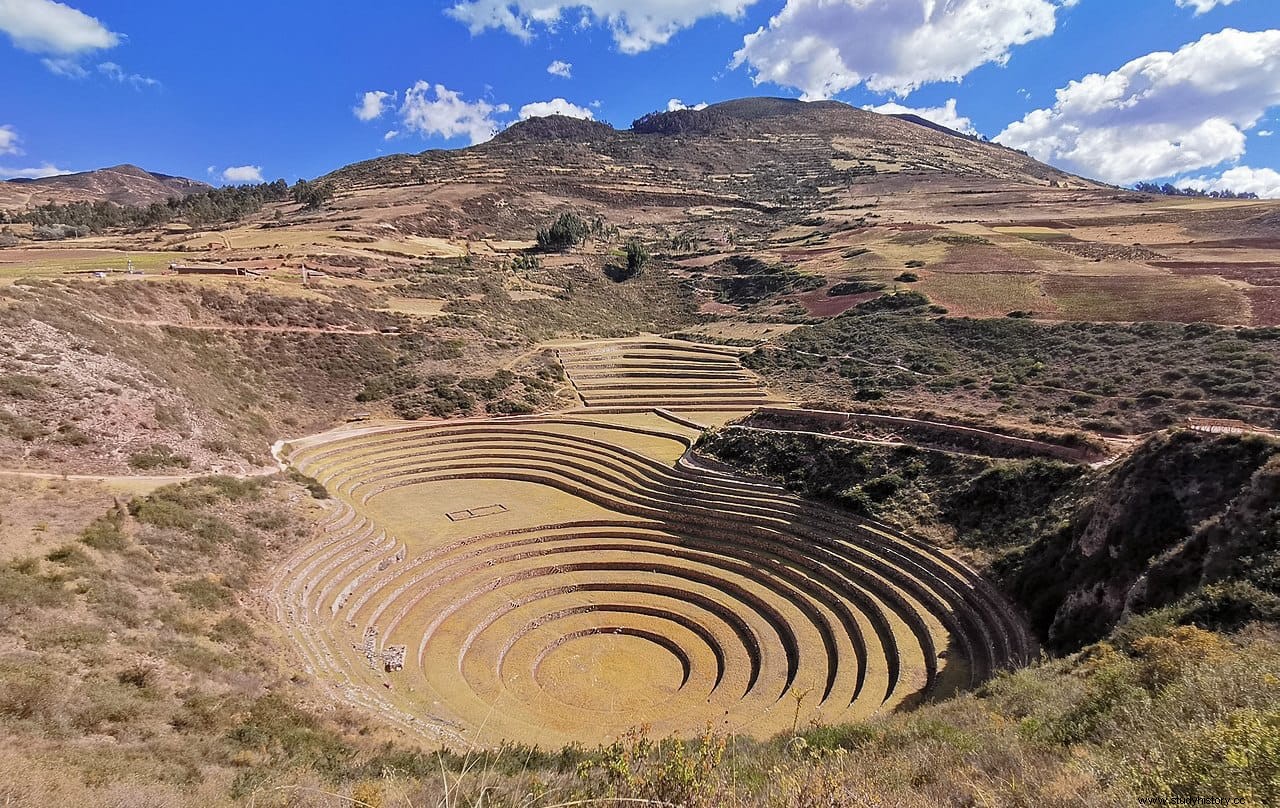
Due to heavy rains in 2010, the terraces suffered serious damage, with some parts collapsing. This forced restoration and repair work that has not yet been fully completed. Even so, Moray is one of the main tourist attractions of the Sacred Valley of the Incas in Peru.
